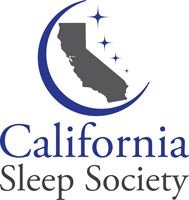Richard S. Rosenberg, PhD
So, the other day (which, at my age, could be anything from yesterday to five years ago) my wife caught me at 11:00 PM circling around the kitchen, hallway, living room and dining room of our apartment. She asked me what I was doing, and I told her that if I burned 15 more calories my Apple Watch would reward me with some fireworks. When I said this, I thought it was important, but when the words left my mouth I realized that I sounded foolish. But it reminded me that the act of measurement is powerful and can lead to significant modification of behaviors.
The AASM advocated quality measures for sleep disorders in a series of articles published in the Journal of Clinical Sleep Medicine, including obstructive sleep apnea in adults (1) and narcolepsy (2). Both of these articles reference the construct of sleepiness, which has proven to be as elusive as the Yeti. We get a glimpse of the beast when we use the Epworth Sleepiness Scale, but it is just one of many considered along with the Stanford, Karolinska, Cleveland Adolescent and other sleepiness scales. Clinical research studies and frequent use in clinical practice support the ESS, which is considered to have “adequate construct validity” (2). The Multiple Sleep Latency Test is also included in the quality measures and has even more data in support of its use (3). Validity of the MSLT is supported by studies of experimental sleep fragmentation, sleep restriction, correlation with severity of sleep disorders and expected changes with the use of sleep-altering medications.
Our understanding of sleepiness would be strengthened if our measures had convergent validity. That is, one measure of sleepiness would correlate with another and we would converge on a coherent understanding of what we mean when we say that someone is sleepy. Unfortunately, as evidenced by many studies and replicated by a recent study of patients with sleep disordered breathing and systolic heart failure by Mehra and colleagues (4), the MSLT and ESS do not seem to correlate very well. They measured several biomarkers including cortisol, interleukin-6 and TNF-alpha. All of these sided with the MSLT, with statistically significant negative associations (higher levels were associated with lower MSLT latencies). There were no associations between the biomarkers and the ESS.
In a thoughtful and provocative editorial accompanying the Mehra article, Trotti (5) notes the often-used distinction between the subjective (ESS) and “objective” or at least more quantitative (MSLT) measures of sleepiness. But there are other aspects of the sleepiness construct as well, including vigilance as measured by the persistent vigilance task. The PVT is objective and quantitative, but is not related to interleukin-6 levels and therefore provides a different measure than the MSLT. Let’s not forget to include fatigue, a common symptom of the heart failure patients used in the Mehra study, which many consider to be distinct from sleepiness. Is there a “biological” sleepiness that is separate from “subjective” sleepiness? We’re not very good at knowing when we are about to fall asleep, but we can indicate when we are dragging and not feeling very alert. Is one more important than the other?
Here’s an interesting fact: The AASM recently published a guideline and discussion on the amount of sleep needed for “optimal health” (6). The seven hour a night minimum promises optimal cognitive, driving and job performance – but says nothing about minimizing sleepiness. So we know which side of the sleepiness issue the AASM favors.
Trotti supports a “multidimensional” entity for sleepiness, requiring a range of subjective and objective measures. Personally, I’m waiting for a unified theory of sleepiness. One that can be measured by my Apple Watch. And when my wife says it’s time to get up, I can tell her that just 15 minutes of extra sleep will get me some fireworks. And I love it when my watch gives me fireworks.
REFERENCES:
- Aurora RN, Collop NA, Jacobowitz O, Thomas SM, Quan SF, Aronsky AJ. Quality measures for the care of adult patients with obstructive sleep apnea. J Clin Sleep Med 2015;11(3):357–383.
- Krahn LE, Hershner S, Loeding LD, Maski KP, Rifkin DI, Selim B, Watson NF. Quality measures for the care of patients with narcolepsy. J Clin Sleep Med 2015;11(3):335– 355.
- Standards of Practice Committee of the American Academy of Sleep Medicine. Practice parameters for clinical use of the multiple sleep latency test and the maintenance of wakefulness test. SLEEP 2005;28(1):113-121.
- Mehra R, Wang L, Andrews N, Tang WH, Young JB, Javaheri S, Foldvary-Schaefer N. Dissociation of objective and subjective daytime sleepiness and biomarkers of systemic inflammation in sleep-disordered breathing and systolic heart failure. J Clin Sleep Med. 2017;13(12):1411–1422.
- Trotti LM. Characterizing sleepiness: are we drawing the right line in the sand? J Clin Sleep Med. 2017;13(12):1369–1370.
- Watson NF, Badr MS, Belenky G, Bliwise DL, Buxton OM, Buysse D, Dinges DF, Gangwisch J, Grandner MA, Kushida C, Malhotra RK, Martin JL, Patel SR, Quan SF, Tasali E. Joint consensus statement of the American Academy of Sleep Medicine and Sleep Research Society on the recommended amount of sleep for a healthy adult: methodology and discussion. J Clin Sleep Med 2015;11(8):931–952.
